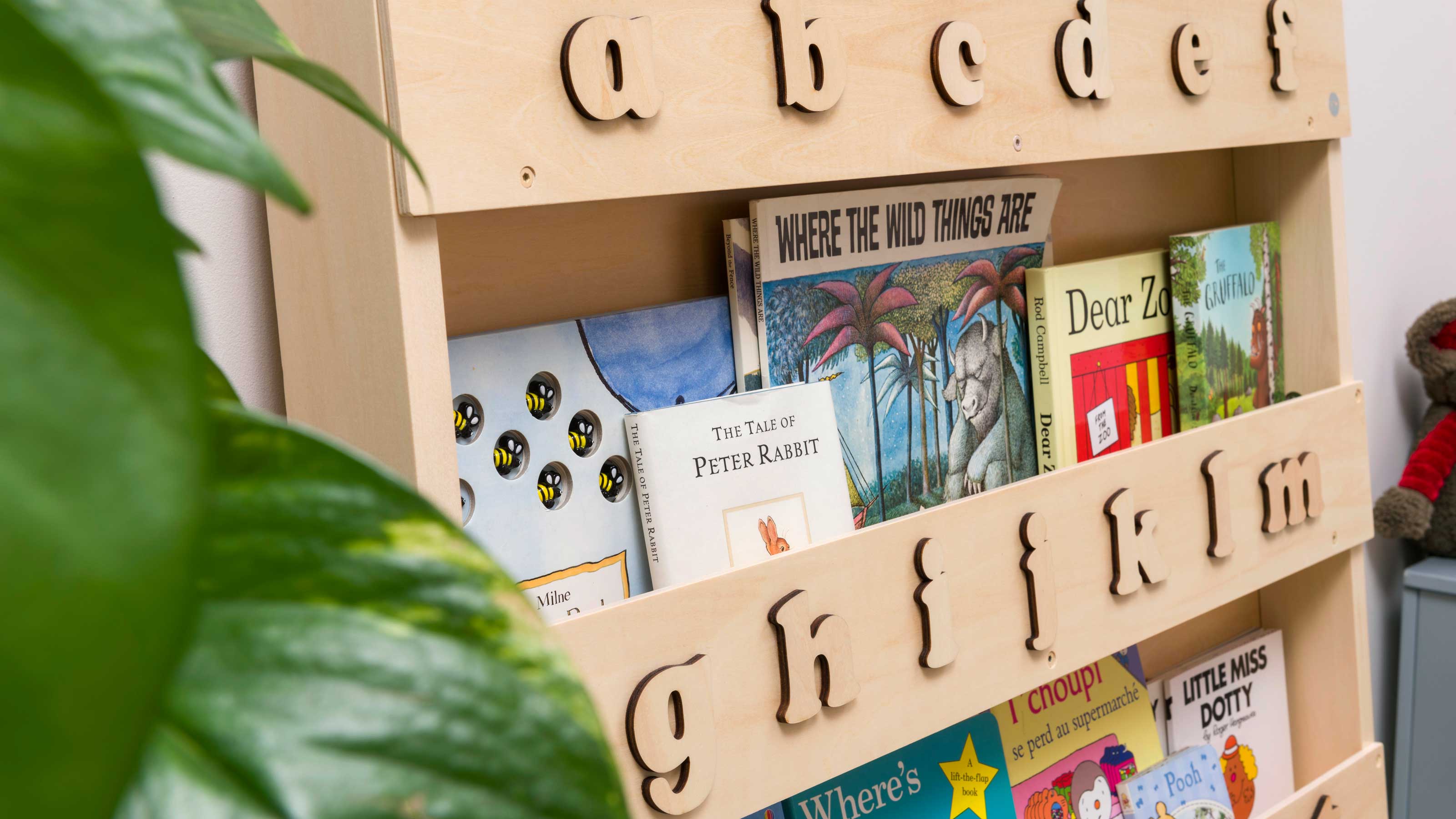
- 1. Make peace with letting go of books
- 2. Streamline your book collection
- 3. Set up a rotation system
- 4. Set aside space for favorites
- 5. Zone books according to theme
- 6. Sort books into baskets and bins
- 7. Make the covers visible
- 8. Store library books separately
- 9. Arrange by color
- 10. Keep a curated collection going forwards
- FAQs
We all want to instill a love of reading in our little ones, but constant trips to the bookshop aren't the way to do it. Rather than buying more, rotate and organize your children’s books so they’re nicely visible and easy to access. It’ll make for a much more inviting reading corner and makes it easier to keep on top of tidiness, too.
Organizing a bookshelf for children is a little different from how you would do it for yourself. Unlike adults, they tend to recognize books based on colors and cover pictures rather than the title on the spine, so you’ll need to bear this in mind when arranging, particularly if you have more reluctant readers.
It’s easy enough to do though, and is a clever way of injecting personality into your children’s bedroom bookshelf ideas.
How to organize children’s books
Whether you’re sorting book storage ideas as part of organizing a playroom, a kid's bedroom or as part of a communal living space, we’ve gathered the best ways to keep on top of your little one’s library.
1. Make peace with letting go of books

Just like when decluttering toys, decluttering books can be a difficult process, both for you and you and your child. They may be outgrown, but they often hold a lot of emotional significance, which can make it hard to let go. If you’re feeling the guilt, try to remember that it’s not the books themselves that hold significance, it’s the memories they hold, and those aren’t going anywhere.
There’s also the worry that in reducing your child’s book collection, you’re running the risk of them losing interest in reading. It’s a logical conclusion, but according to the experts, an unfounded one. In fact, it’s the complete opposite.
'We all like to spoil our children with lots of lovely things, but the psychology behind it shows that we may be causing them stress when we crowd their vision. Too much choice and decision can cause them to become overwhelmed and lose interest more quickly,' explains professional organizer Vicky Silverthorn of You Need a Vicky.
Design expertise in your inbox – from inspiring decorating ideas and beautiful celebrity homes to practical gardening advice and shopping round-ups.
While this may reassure you, it might not resonate so highly with your child, so don’t push them too hard. If you want to avoid declutter regret, put the book aside in a ‘maybe’ box for a few weeks, stored somewhere out of sight. If they haven’t asked for it in that time, you’re probably safe to pass it on.

Vicky Silverthorn has been a professional organizer for over 10 years, helping people from all walks of life to declutter and organize their homes. As an expert in the industry, she believes that your wellbeing starts at home; if your home is in shape, other elements of your life will follow. Vicky has written an Amazon bestselling book on living a less cluttered life.
2. Streamline your book collection
So, when was the last time you decluttered your child’s book collection? If it’s been a while, chances are you’ll have a fair few that can be moved along, freeing up space for new, more age-appropriate stories as your child grows.
Start by gathering all the books together, then roughly group into categories; picture books, reference books, chapter books, seasonal books, and so on. Depending on your child’s age, you might be able to declutter an entire category straight away, baby board books for example. Work through the rest, recycling any with torn pages and putting aside duplicates, as well as any your child has outgrown or no longer enjoys.
Most public libraries will accept book donations to sell at their semi-annual book sales, while younger children's books can go to area preschools and local school aftercare programs. Certain charities won’t accept books, so check in advance,' advises home organizer Ben Soreff, founder of House to Home Organizing.

Ben Soreff is a professional organizer from Portland, Maine, with 16 years of experience helping people to organize and declutter their homes, as well as working with hoarders. As a father to two, Ben knows well the challenges of keeping a house not only functional but looking beautiful. He also brings a dad’s perspective to organizing solutions.
3. Set up a rotation system
Rotating books on a regular basis is a great way of keeping things fresh and interesting, plus it gives you the opportunity to inject seasonal or educational titles throughout the year. It’s really easy to do: fill two or three storage baskets from Amazon with books (try and include a variety of genres in each), then simply switch them in and out on a weekly, bi-weekly or monthly basis. We’d recommend doing this when organizing toys, too.
4. Set aside space for favorites
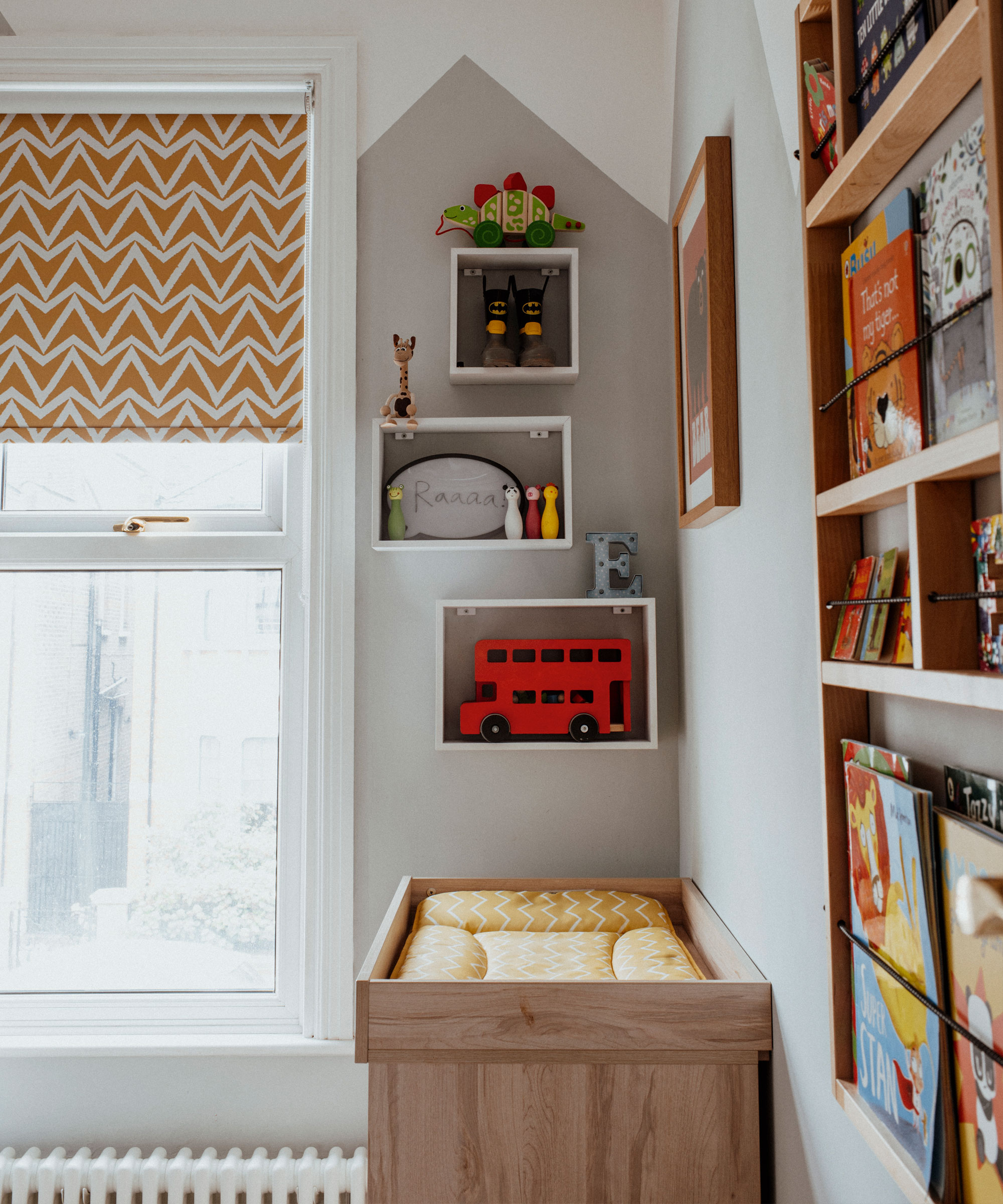
While a rotation system is great, bear in mind that your child will have favorites. Reserve prime storage space for these reads and keep them separated from the rest with book dividers to save you from having to track them down every time.
If you’re reading to your child every night it’s fairly easy to keep on top of what’s still a favorite and what’s not – older children you’ll have to check in with every now and then. Remove those that have fallen out of favor and either put them back into the rotation system or pass it on.
5. Zone books according to theme
The best playroom ideas are those that use zoning; areas dedicated to specific tasks, such as creating, playing, relaxing, studying, and so on. While dedicating space solely to storytime does, of course, make sense, an alternative idea could be to position books across different zones, in line with how your child plays.
‘To encourage purposeful learning, sort children’s books based on the themes they’re most interested in, then arrange around the room accordingly; cooking-themed books next to the role-play stove, vehicle-themed books next to cars, diggers and roads, creative books next to the craft table, you get the idea. Bear in mind that opportunities for reading can come in other forms, too – think menus, shopping lists, magic spells… be as creative as you like,' says founder of More to Organising, Kathryn Lord, an expert in organizing with children in mind.
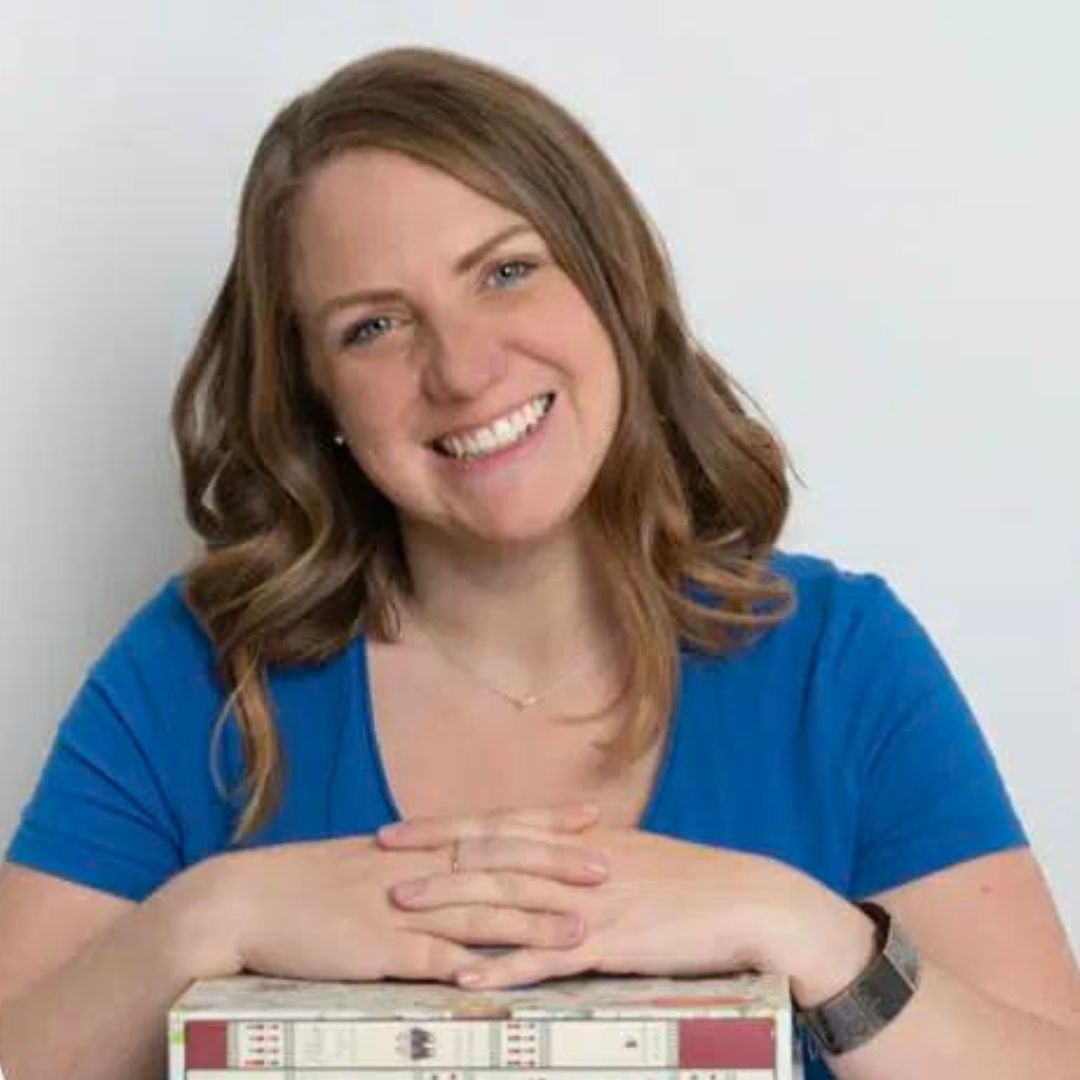
Kathryn helps busy parents organize their homes and routines with their children in mind. Not only an organizational expert, but Katherine is also a childcare expert too and has published a book, More To Organizing [available on Amazon], on organizing with children too.
6. Sort books into baskets and bins
Give younger children the freedom to choose books themselves by storing them in open-topped baskets, bins and rolling carts positioned somewhere they can easily access – on the floor or inside a cubby-style storage unit for example.
Taking the time to separate your board books from your sticker books, and your fairytales from your reference books, is also worthwhile, as they’ll be able to find what they need quickly – using color-coded labels at Amazon can help with this, or you could use stackable storage containers at Ikea.
‘Be sure you teach children how to put books back carefully, rather than just dump them in. This keeps them in good condition and teaches respect for things, plus it saves you having to do it later,' says Jennifer Ebert, digital editor at Homes & Gardens.

Jen is the Editor of Homes & Gardens online. Before starting this position, she had completed various interior design courses at KLC Design School, as well as working across Ideal Home, LivingEtc, 25 Beautiful Homes and Country Homes & Interiors as an interiors writer.
7. Make the covers visible
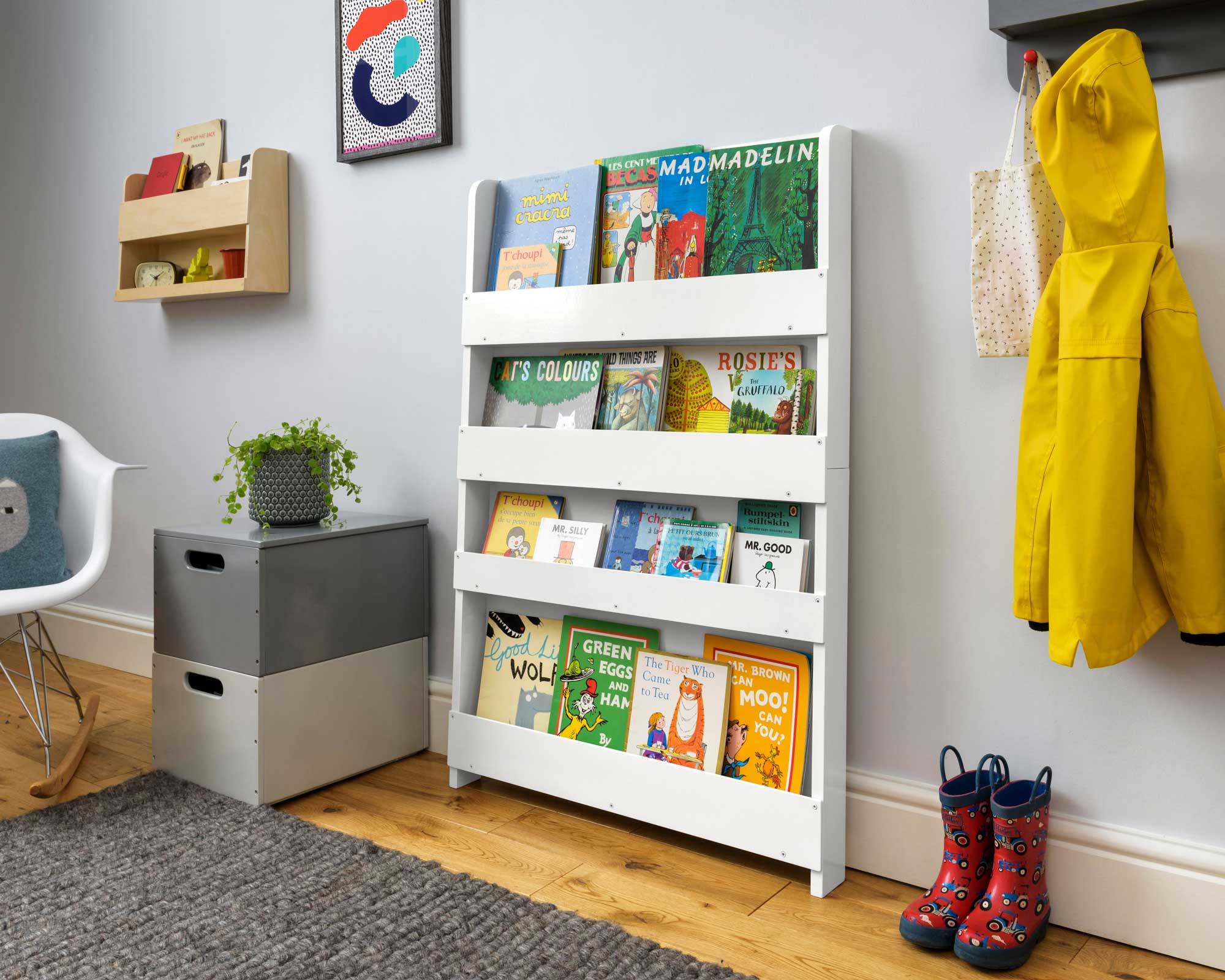
Storing books face out is ideal for younger children who recognize their favorites by the cover, or for those more reluctant readers, who need a little more encouragement to pick up a book now and then. Mount picture ledges onto the wall to keep them neat, tidy, and within easy reach, or invest in a front-facing bookcase, such as this one at Target.
If you’ve got books you don’t want your child to have access to without supervision, perhaps older, heirloom books or those with pop-up pages that could easily get ripped or torn, consider mounting them on a shelf out of reach to create a pretty bedroom wall decor idea. The same can be done with books that have particularly interesting or colorful covers, or that complement your child's bedroom theme, something to bear in mind when styling a bookcase, too.
8. Store library books separately
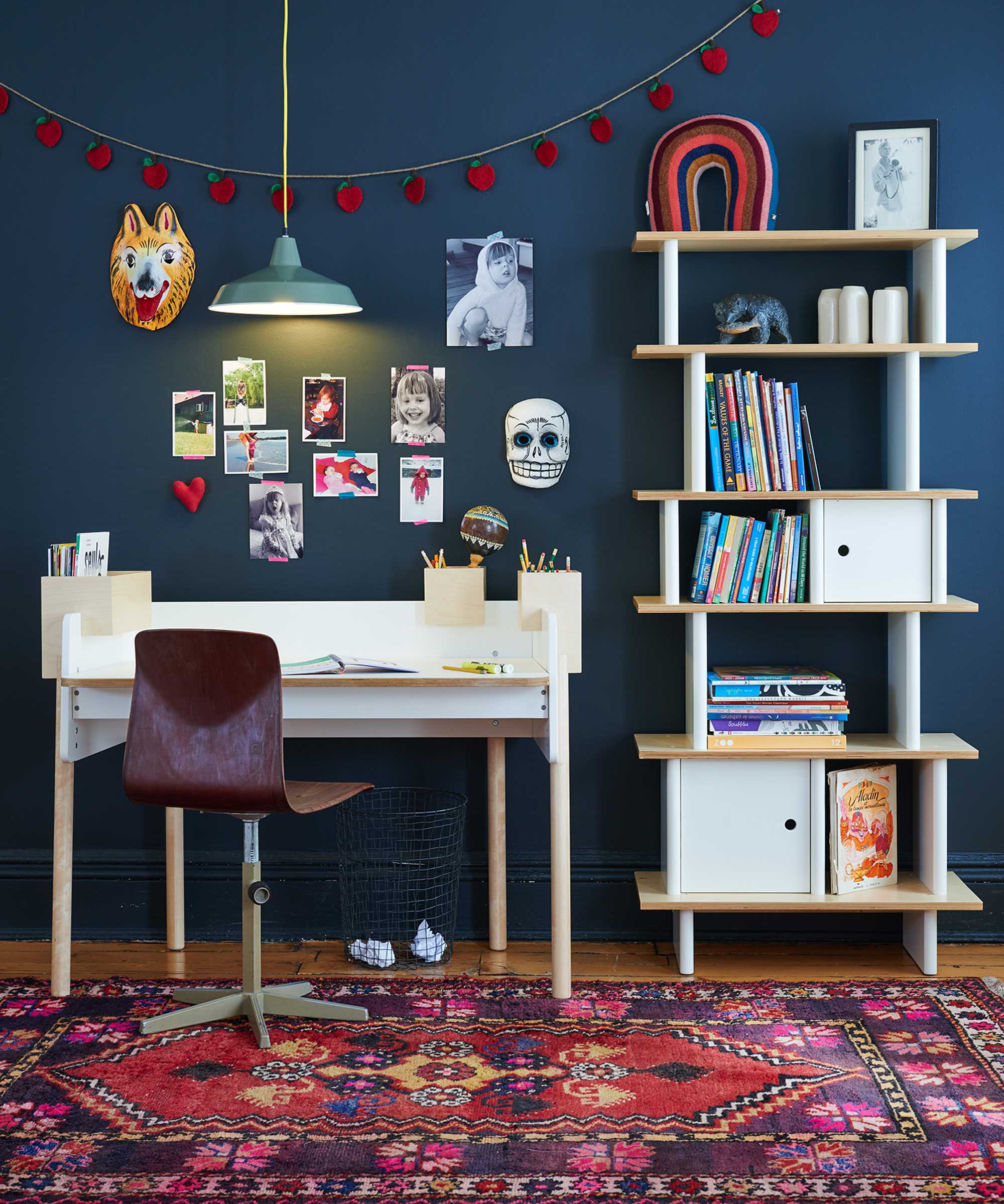
‘Using the library can be a much more cost-effective way of keeping your child’s book collection current and streamlined, plus it gets them into the habit of respecting and caring for things that don’t belong to them’, says Kathryn Lord.
While bringing back books from the library to enjoy together with your child is lovely, what’s not so lovely is the fine incurred when you fail to find them come deadline day! Set aside space specifically for library books and get into the habit of putting them back there each time so you can keep track of what you have borrowed.
9. Arrange by color
Organizing a bookshelf in order of color is not the most practical method for adults, but for children, more visual systems such as this have been proven to motivate tidiness and maintain order in the long term.
‘Color coordinating is great for kids, as it’s both aesthetically pleasing and an easy way for them to keep track of their favorite stories. We’ve seen success time and time again with children maintaining this method’, says professional organizer Shannon Krause, co-founder of Tidy Nest.

Shannon Krause is a certified professional organizer who holds a specialist certificate in brain-based conditions from the National Association of Productivity and Organizing Professionals (NAPO), and is a certified Reiki master which she incorporates into her work with clients. Tidy Nest has helped dozens of clients bring order into their lives and has won local awards recognizing their work.
10. Keep a curated collection going forwards
There’s no point going to the effort of decluttering and organizing children’s books, only for them to start piling up again in a few months' time. Make a pledge to use the library as much as you can and stick to the 'one-in-one-out' rule; for every new book your child has, they must donate an existing one they no longer read.
FAQs
How do you store children’s books?
How you store your children’s books will depend on a few things such as what room they’re in, how much space you have, and how old your children are. There’s no ‘right' way; baskets and bins, caddies or closets, wall-mounted shelves or front-facing bookcases – they’re all fine, but the one rule you do need to abide by is to ensure your child can access them independently.
Keep books within easy reach at all times and try and avoid closed storage options if you can – out of sight out of mind rings true when it comes to children, they’re much more likely to pick a book up if it’s right there in front of them.
Organizing books is absolutely one of the best things you can do to encourage your children to read, however, it’s important that you don’t go too far with it. Reading should be a joy, not a chore, so allow them to read what and when they want to, and be consistent with teaching them how to put things back respectfully afterward –
they’ll soon catch on.

For 10 years, Tara King worked as a Content Editor in the magazine industry, before leaving to become freelance, covering interior design, wellbeing, craft and homemaking. As well as writing for Ideal Home, Style at Home, Country Homes & Interiors, Tara’s keen eye for styling combined with a passion for creating a happy – and functional – family home has led to a series of organization and cleaning features for H&G.
